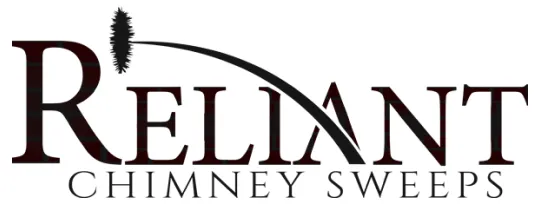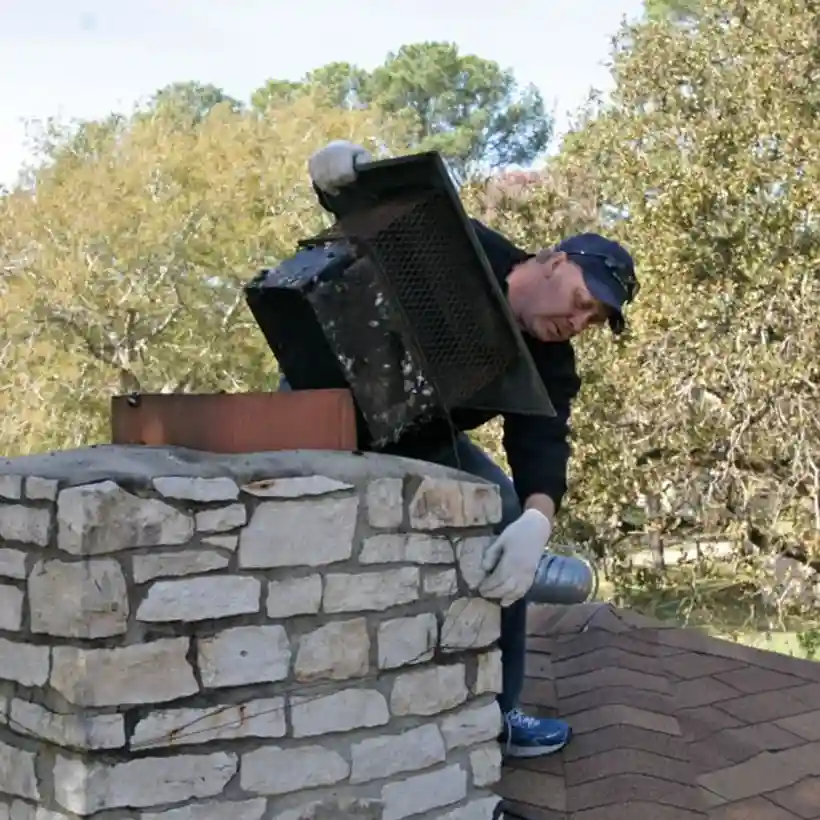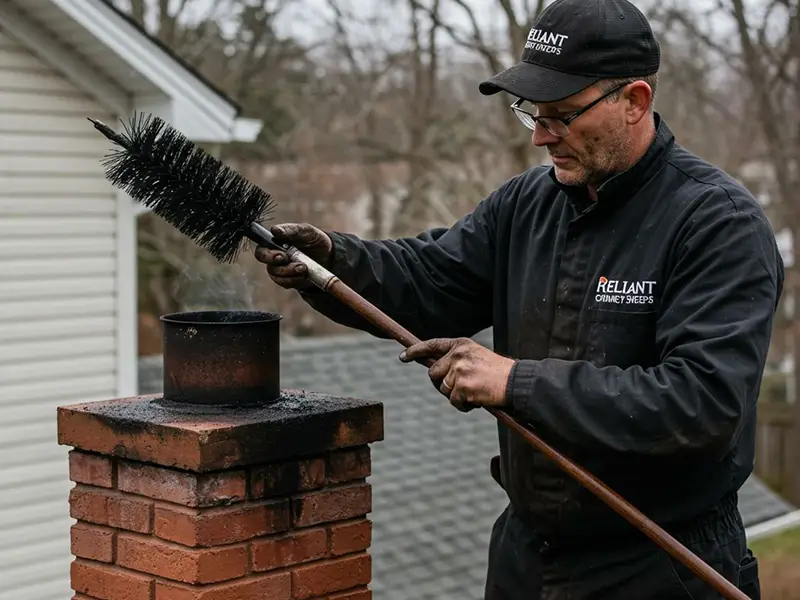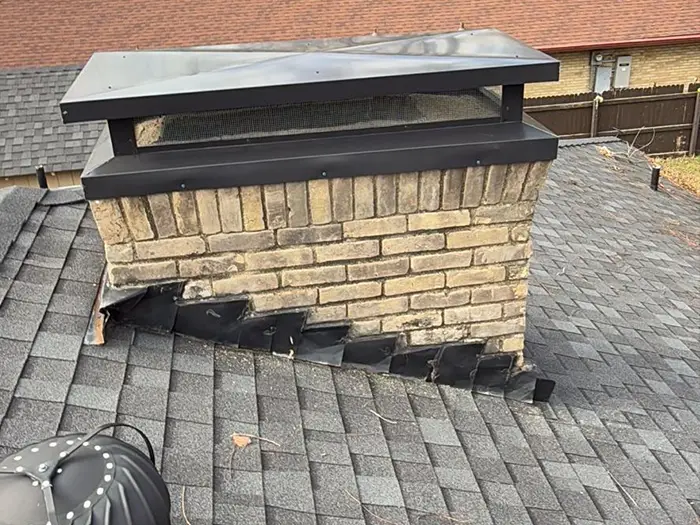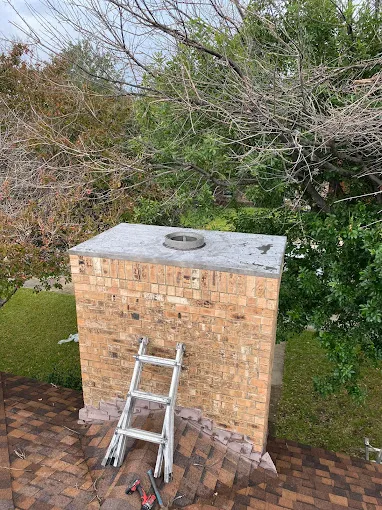If you have a chimney, you might have wondered whether a chimney cap is really necessary. After all, it’s just a metal cover sitting on top of your chimney—how important can it be? The answer: very important . A chimney cap plays a crucial role in protecting your home from water damage, animal intrusions, and even fire hazards.
At Reliant Chimney Sweeps , we’ve seen firsthand the problems that can arise from an uncapped chimney. Whether you use your fireplace regularly or only on special occasions, having a properly installed chimney cap can save you from costly repairs and potential hazards down the road.
What is a Chimney Cap?
A chimney cap is a metal covering placed at the very top of your chimney. It typically includes mesh siding and a solid top, designed to keep out debris, animals, and moisture while still allowing smoke and gases to escape freely. Chimney caps come in different materials, including stainless steel, aluminum, and copper , each with varying levels of durability and protection.
Although simple in design, a chimney cap serves multiple important functions that help maintain the integrity of your chimney and home.
Why Do You Need a Chimney Cap?
1. Keeps Water Out of Your Chimney
Water is one of the biggest enemies of your chimney. When rain or snow enters an uncapped chimney, it can seep into the masonry, causing the bricks and mortar to deteriorate over time. This leads to cracks, leaks, and even costly structural damage.
According to FEMA , water damage is a major contributor to home deterioration and can lead to mold growth, foundation problems, and expensive repairs. Installing a chimney cap is one of the simplest ways to prevent water from entering your chimney and causing long-term damage.
2. Prevents Animal Infestations
Birds, squirrels, raccoons, and even bats love finding warm, sheltered spaces to build nests— and your chimney is a prime location if left open. A nest inside your chimney can block proper ventilation, leading to dangerous smoke and carbon monoxide buildup inside your home.
The Environmental Protection Agency (EPA) warns that carbon monoxide poisoning can be deadly, particularly when ventilation is compromised. A chimney cap with mesh screening keeps wildlife out, ensuring your chimney stays clear and functional year-round.
3. Reduces Fire Hazards from Sparks & Embers
If you use your fireplace frequently, hot embers and sparks can sometimes escape through the top of the chimney. On a windy day, these sparks can land on your roof, trees, or nearby dry grass , potentially starting a fire. A chimney cap with a spark guard acts as a barrier, preventing embers from escaping and reducing the risk of accidental fires.
4. Block Leaves, Twigs, & Debris
If your home is surrounded by trees, your chimney is at risk of becoming a catch-all for falling leaves, twigs, and other debris. Over time, these materials can build up inside the chimney, leading to blockages that restrict airflow. Poor ventilation increases the risk of smoke damage and carbon monoxide buildup inside your home.
A chimney cap helps keep the flue clear by preventing debris from accumulating inside, reducing the risk of obstructions and improving fireplace efficiency.
5. Improves Chimney Draft & Efficiency
A properly installed chimney cap can help improve chimney draft , allowing smoke to exit more efficiently while preventing downdrafts from blowing cold air back into your home. Without a chimney cap, wind can create backdrafts, causing smoke, soot, and even sparks to enter your living space.
If you’ve noticed that smoke from your fireplace isn’t venting properly, installing a chimney cap can help regulate airflow and improve fireplace performance.
What Happens If You Don’t Have a Chimney Cap?
Without a chimney cap, your home is left vulnerable to weather damage, animal invasions, and fire hazards. Here are some of the most common problems homeowners face when their chimney isn’t capped:
- Water leaks that lead to expensive chimney and interior home repairs.
- Animal infestations causing blockages and unpleasant odors.
- Fire hazards from stray embers and debris buildup.
- Blocked ventilation leading to carbon monoxide exposure.
- Poor heating efficiency due to drafts entering your home.
By installing a chimney cap, you can avoid these issues and protect your home year-round.
Choosing the Right Chimney Cap for Your Home
When selecting a chimney cap, it’s important to consider material, size, and mesh design to ensure it fits your chimney properly and provides the best protection.
- Stainless Steel – Durable, rust-resistant, and long-lasting. Ideal for most homeowners.
- Copper – Aesthetic and durable, but more expensive.
- Galvanized Steel – More affordable but prone to rusting over time.
Our team at Reliant Chimney Sweeps can help you choose the best chimney cap for your home and install it properly for maximum efficiency and protection.
Professional Chimney Cap Installation & Maintenance
While some homeowners attempt to install chimney caps themselves, professional installation ensures a secure fit and long-lasting protection. A poorly installed chimney cap can blow off in strong winds or fail to provide adequate ventilation.
At Reliant Chimney Sweeps , we provide expert chimney cap installation services to keep your home safe from leaks, animal intrusions, and fire hazards. We also offer chimney maintenance and inspections to check for wear and tear, ensuring your chimney cap remains in top condition over time.
Protect Your Home—Get a Chimney Cap Today
If your chimney doesn’t have a cap, now is the time to get one. A small investment in a chimney cap can prevent costly repairs and major safety hazards down the road.
At Reliant Chimney Sweeps , we’re here to help you protect your home with high-quality chimney caps and professional installation services. Contact us today to schedule a consultation and give your chimney the protection it deserves.
